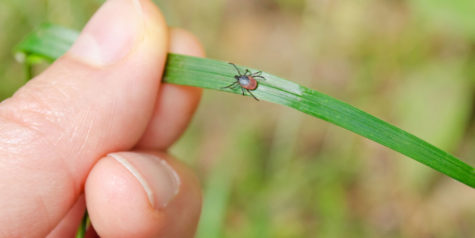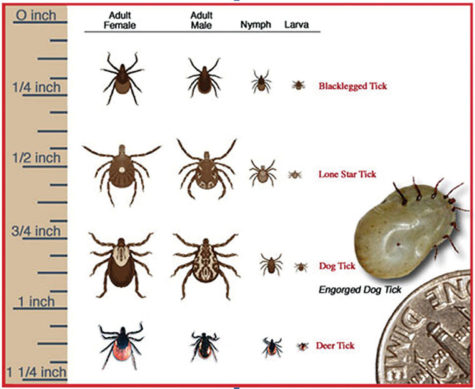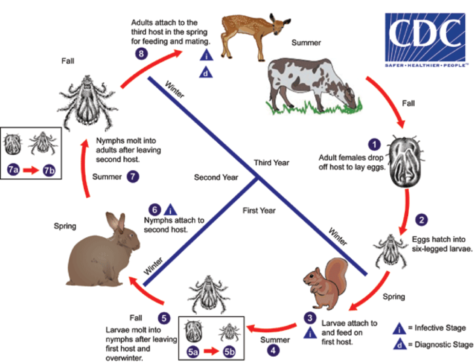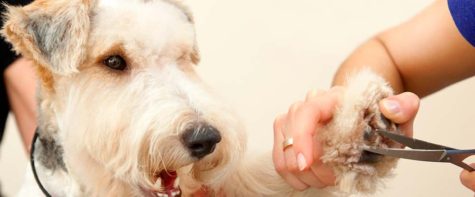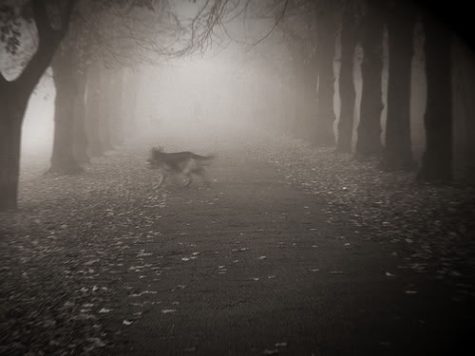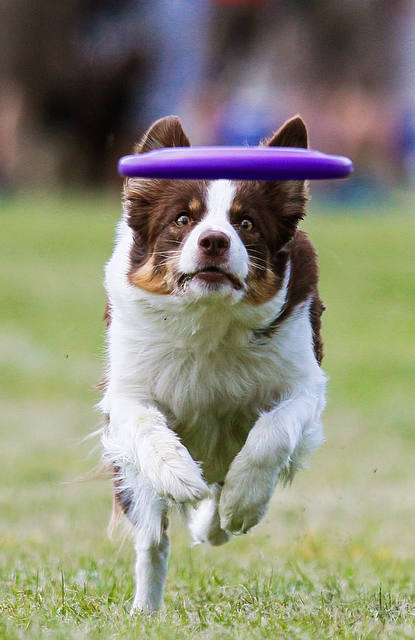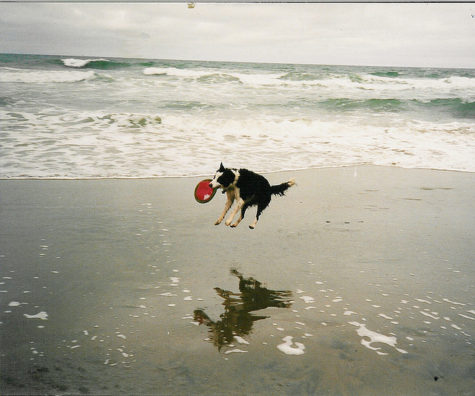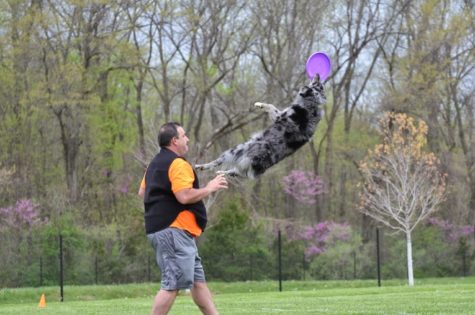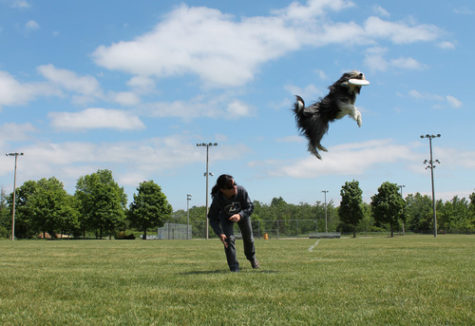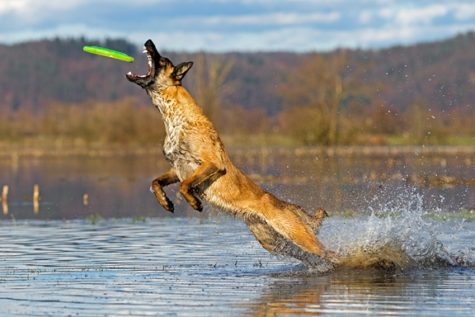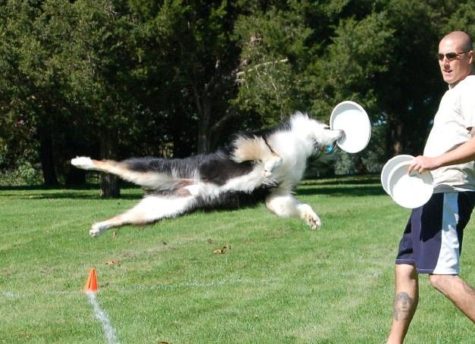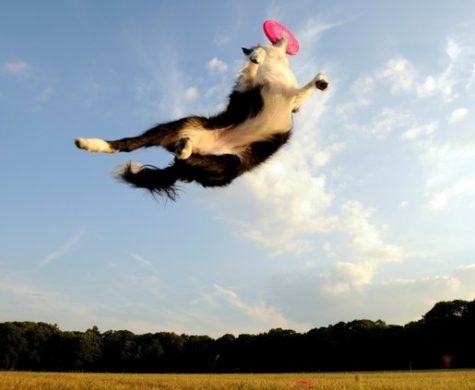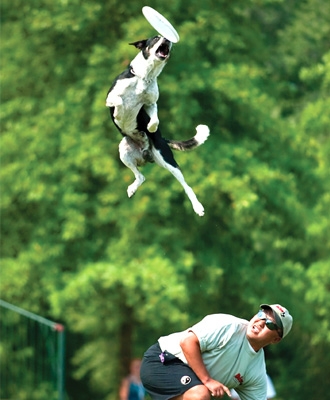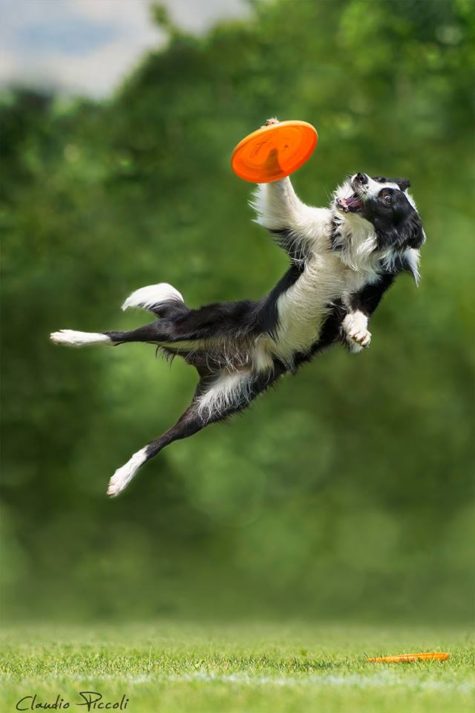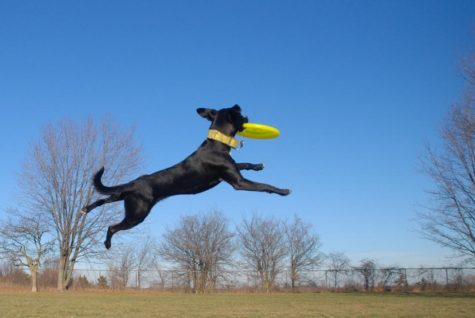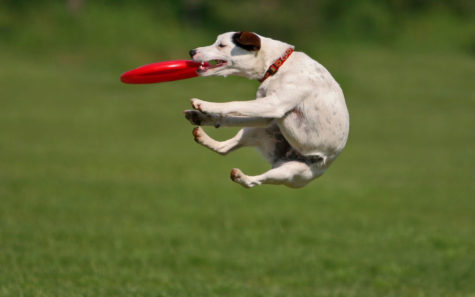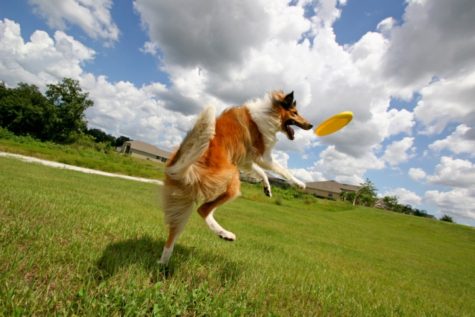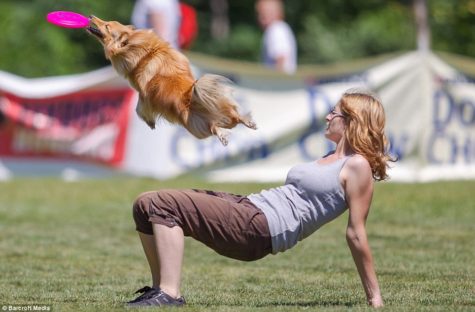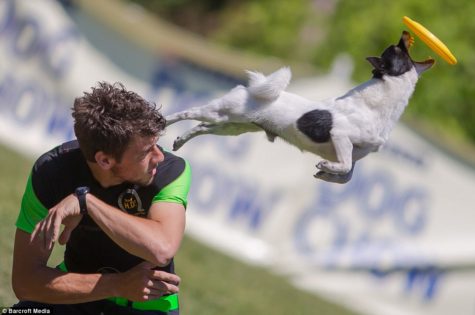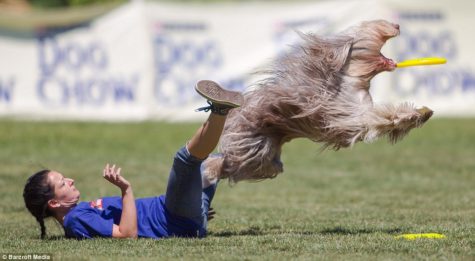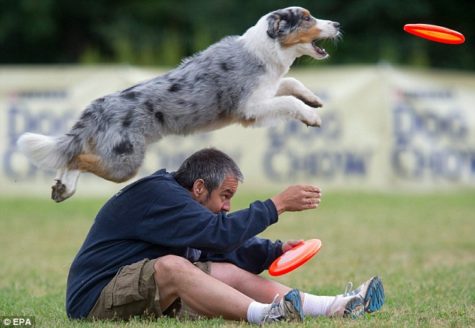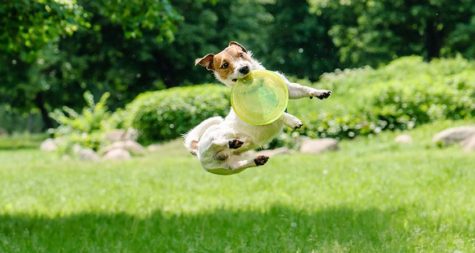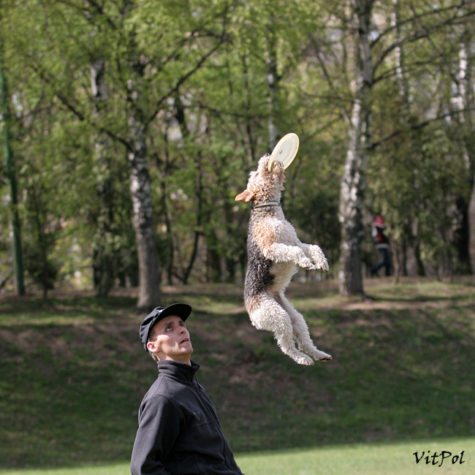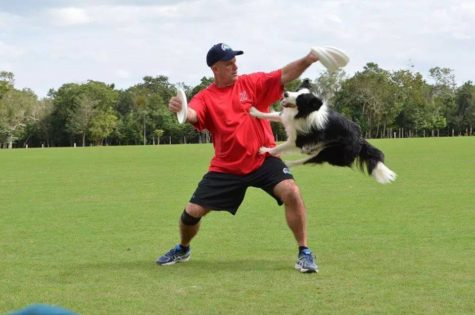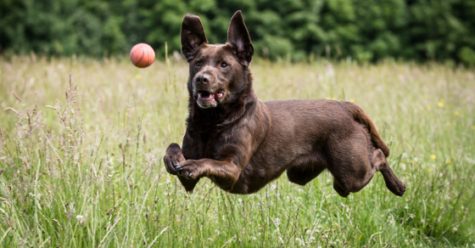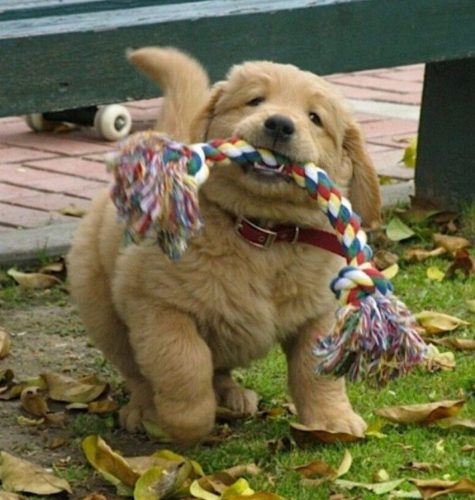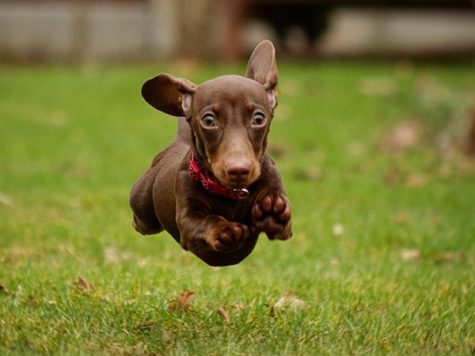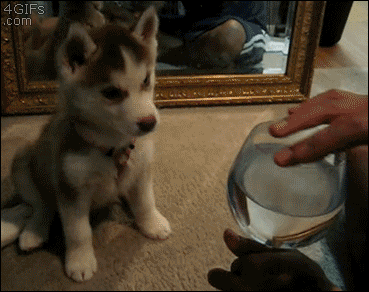Yearly Archives: 2017
Keeping Ticks Out of Your Yard
Deer ticks are most abundant in the woods where hosts for the tick flourish and ticks find high humidity levels necessary for survival. On lawns, most deer ticks (82%) have been recovered within 9 feet of the lawn edge, especially areas adjacent to woods, stonewalls, or ornamental plantings. Fewer ticks are found in the sunny, manicured areas of the lawn. Ticks may also be found in groundcovers such as Pachysandra.
Create a tick safe zone by altering the landscape to increase sunlight, reduce tick habitat and discourage rodent hosts. Create a clearly defined, manicured border. A dry wood chip, tree bark, mulch, or gravel barrier between woods and lawn can reduce tick migration into the lawn. The removal of leaf litter at the lawn perimeter also can help reduce the number of I. scapularis nymphs on the lawn. Landscape modifications include:
- Keep grass mowed.
- Prune trees, mow the lawn, and clear leaf litter and brush, especially along edges of the lawn, stonewalls, and driveways.
- Move play sets away from the woodland edge.
- Restrict groundcover in areas frequented by family.
- Adopt some landscaping practices such as gravel pathways, mulches, decking, stone, tile, and other hardscapes around the home.
- Wildflower meadows, herbal gardens, etc. have very few ticks and may be an acceptable alternative to grass in some areas.
Treating the yard and outdoor kennel area, if any, is an important tool in the arsenal against ticks. There are products containing fenvalerate, that can be used to spray the outdoor area. According to the CDC, Fenvalerate is not harmful to the environment, it is however, toxic to animals, pets, and people, so please use common sense.
What is a tick?
Ticks are small parasitic arachnids that live by sucking the blood of mammals, birds, and other animals. Not only a major nuisance to humans and domestic animals, ticks are also responsible for transmitting many diseases, including Lyme disease, Rocky Mountain spotted fever, and Ehrlichiosis. Although there are hundreds of tick species, the major species of concern in the United States are the deer tick, the American dog tick, the brown dog tick, the Rocky Mountain wood tick, and the lone star tick.
The deer tick (Ixodes scapularis), also known as the blacklegged tick, lives in the eastern and middle U.S. and also has a close relative on the West Coast. It attacks many animals including humans, deer, and pets. Known for infecting humans with Lyme disease, the deer tick can also transmit human granulocytic ehrlichiosis and babesiosis.
The American dog tick (Dermacentor variabilis) is found east of the Rockies as well as on the West Coast. It prefers dogs but will also bite humans and other large mammals. It can transmit Rocky Mountain spotted fever to humans. The brown dog tick (Rhipicephalus sanguineus) lives throughout the U.S., and though it rarely bites humans, it is a highly annoying pest to dogs and other pets. It is not known to transmit disease to humans.
The Rocky Mountain wood tick (Dermacentor andersoni) occurs in the Rocky Mountain region of the U.S. and southwestern Canada. It transmits Rocky Mountain spotted fever to humans and blood parasites to cattle and dogs. It also can inject dangerous toxins into the host as it feeds.
The lone star tick (Amblyomma americanum) is found in the southeastern and mid-Atlantic United States. It has a painful, itchy bite and can transmit ehrlichiosis, tick-borne typhus, and tularemia to humans.
Appearance and habits:
A tick has eight legs, a tiny head, and a flat, seed-shaped body that swells up like a balloon as it feeds. Ticks that are only a few millimeters long before they bite can grow up to half an inch when engorged with blood. Their appearance varies depending on species, sex, and life cycle stage, but they are generally dark-colored, sometimes with distinctive patterns.
In each stage of a tick’s life cycle (larva, nymph, and adult) it searches for a host, using its ability to sense heat, light, and carbon dioxide. The tick often crawls to the top of weeds, grass, and other vegetation so that it can grab a passing host animal with its front legs. Once it has grabbed onto a host, it may bite any part of the body but usually prefers to crawl to the top of the host and bite the head, neck, or ears. The tick uses fanglike mouth parts called chelicerae to pierce the skin, and inserts a feeding tube called a hypostome. The hypostome is barbed, making it very hard to remove the tick by pulling. The tick drinks blood until it is full, then drops off the host to molt or lay eggs.
People typically acquire ticks in the spring and summer, while walking through tall grass, woods, and weedy areas. Many ticks can smell animals and are thus attracted to paths and trails where their potential hosts travel. They can also infest homes if carried indoors by pets.
The Life Cycle of a Tick
Most types of ticks require three hosts during a two or three year lifespan. Each tick stage requires a blood meal before it can reach the next stage. Hard ticks have four life stages: egg, larva, nymph, and adult. Larvae and nymphs must feed before they detach and molt. Adult female ticks can engorge, increasing their weight by more than 100 fold. After detaching, an adult female tick can lay approximately 3,000 eggs.
Adult females drop off the host to lay eggs after feeding, usually in the fall. During the egg-laying stage, ticks lay eggs in secluded areas with dense vegetation. The eggs hatch within two weeks. Some species of ticks lay 100 eggs at a time, others lay 3,000 to 6,000 per batch.
Eggs hatch into six-legged larvae and overwinter in this larval stage. When spring comes, the larvae move into grass and search for their first blood meal. They attach themselves to their first host, usually a bird or rodent. Later in the summer, engorged larvae fall onto the ground and molt into nymphs, usually in the fall.
Nymphs (which are generally the size of a freckle) remain inactive during winter and start moving again in spring. During the following spring, the nymphs seek out and attach to the second host, usually a rodent, pet, or human.
The nymphs feed on the second host and after this blood meal, fall off the host and molt into adults – off the host – in the late summer or fall. Throughout the autumn, the male and female adults try to find a host, which is again usually a rodent, pet, or human. If adults cannot find a host animal in the fall, they can survive in leaf litter until the spring.
The next spring, adults seek out and attach to a third host, which is usually a larger herbivore, carnivore, or human. The adults feed and mate on the third host during the summer.
The adult female feeds for 8 to 12 days. The female mates while still attached to her host, then both ticks fall off, and the males die. The female remains inactive through the winter and in the spring lays her eggs in a secluded place.
Females may reattach and feed multiple times. The three hosts do not necessarily have to be different species, or even different individuals. Also, humans may serve as first, second or third hosts.
source: Parasites and Health at the Center for Disease Control
Why Grooming Is Important
The physical appearance of your dog influences not just the way your dog feels, it affects his (or her) interactions with his human family as well. After all, who wants to snuggle with a dirty smelly dog? Excessively matted hair, tangles and dirt, do not feel good to your dog either. Believe it or not, a clean dog is a happier, healthier dog.
Here are 8 reasons to keep your dog clean and well groomed:
- Regular bathing keeps your dog healthy it eliminates the germs and dirt your dog picked from playing outside. A clean dog equals a healthy dog.
- A clean pet feels more comfortable. Bathing with a rich lather using a good dog shampoo will remove dander and fleas from your pet’s skin.
- Keeping your dog’s toenails trimmed is important. Trimming your dog’s nails will prevent the germs from accumulating inside of them. Also, trimmed nails will prevent scratches if your dog jumps on you and keeps your furniture safe.
- Brushing your dog’s hair regularly will keep it shiny and tangle free. If you have a long-haired dog, you may need to cut it or have it clipped occasionally to keep him looking nice and neat. Hair that becomes densely matted will harbor moisture and can cause sores and ulcers on the skin under the matted hair.
- Keeping the hair short around his eyes will give him a better view. A dog that can’t see is more likely to nip and bite.
- Some dogs grow hair in their ears that needs to be pulled out periodically. If the ears are not cleaned, or if dirty clumps of thick hair remain in the ears it can cause problems such as ear infections and hearing loss.
- Boost his energy. Clean dog means a happy dog. Just like a human, your pet needs to be cleaned to awaken his senses after having a good wash. Proper grooming is just like rejuvenating his confidence, giving him the energy to enjoy any and all activities that await him.
- A well-groomed pet is much easier to love. Of course, a responsible pet owner doesn’t want his dog to be dirty. A clean and healthy dog is very nice to look at. Others will also appreciate all the proper care that you give your pet.
by Andrei Smith
Superstitions About Dogs
We’ve all heard that a black cat crossing your path brings bad luck, but have you ever heard the following?
- A dog eating grass means rain is coming.
- Meeting a dog is good luck (especially if it’s a Dalmatian).
- A greyhound with a white spot on its forehead brngs good fortune.
- Being followed by a strange dog is bad luck (especially if the dog is black).
- The spectral black dog (barguest) is a harbinger of death.
- A dog howling for no reason means unseen spirits are lurking about.
- A dog howling three times? A death has occurred.
- At one time a dog that had bitten someone was immediately destroyed to protect the person from rabies (even if the dog was healthy).
Photo by Jane W
Frisbee Dogs
A tired dog is a sleepy dog is a good dog. Here is a great collection of some awesome Frisbee dog photographs. Hopefully they will get you motivated to teach your dog “Get it” and “Give” and get the two of you outside and having fun together.
Tossing a Frisbee not your cup of tea? Dogs like to play ball too!
Teaching Give
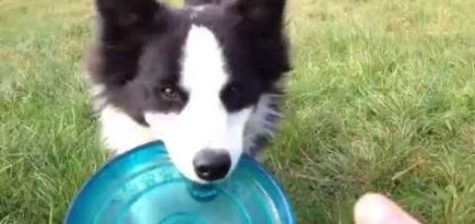 What it means:
What it means:
Put what you have in your mouth into my hand, right now.
Verbal command – “Give”
Tone of voice – Firm, no nonsense
Hand signal – Hand out, palm up
Body Language:
Confident, self assured
Enforcing the command:
Have your puppy on leash, sitting or standing next to you. In your right hand have something (treat or toy) that your puppy is interested in. Toss the item out in front of your puppy. As you toss it, give the command “Get it!”.
How far?
In the beginning, don’t send your puppy out farther than 6 feet or so. As soon as your puppy begins to understand, you can begin to increase the distance.
Do’s and Don’ts:
GO OVERBOARD WITH PRAISE, especially in the beginning. This should be FUN. Motivation will be the key to willing compliance. If your puppy seems unsure, let him sniff the treat or get excited about the toy. The item you use MUST be something your puppy wants.
What your puppy learns:
Cooperation in the context of a game. This command can be used as a reward for good obedience, and lays the foundation for retrieving, tricks, and also helps teach your puppy that active obedience can be fun and rewarding. It also helps to instill greater focus on you, the owner, and is a great way to bond with your puppy.
Written by: Shirley Gibson
Note:
You are welcome to share this post but ONLY IF you give credit and a link back to Teach Your Dog To Behave or shirleytwofeathers.com.
Teaching Get It
What it means:
Run quickly, and get that thing..
Verbal command – “Get it!” or “Fetch”
Tone of voice – Encouraging, exciting
Hand signal – Point in the appropriate direction
Body Language:
Excited, happy.
Enforcing the command:
Have your puppy on leash, sitting or standing next to you. In your right hand have something (treat or toy) that your puppy is interested in. Toss the item out in front of your puppy. As you toss it, give the command “Get it!”.
How far?
In the beginning, don’t send your puppy out farther than 6 feet or so. As soon as your puppy begins to understand, you can begin to increase the distance.
Do’s and Don’ts:
GO OVERBOARD WITH PRAISE, especially in the beginning. This should be FUN. Motivation will be the key to willing compliance. If your puppy seems unsure, let him sniff the treat or get excited about the toy. The item you use MUST be something your puppy wants.
What your puppy learns:
Cooperation in the context of a game. This command can be used as a reward for good obedience, and lays the foundation for retrieving, tricks, and also helps teach your puppy that active obedience can be fun and rewarding. It also helps to instill greater focus on you, the owner, and is a great way to bond with your puppy.
Written by: Shirley Gibson
Note:
You are welcome to share this post but ONLY IF you give credit and a link back to Teach Your Dog To Behave or shirleytwofeathers.com.
Teaching Your Puppy to Come When Called
This is one of the most important commands your puppy will learn and one day could save your puppy’s life. It is well worth the time and effort required to teach it.
What it means:
Come here to me right now.
Verbal command – “your puppy’s name COME!”
Tone of voice – Friendly, Enthusiastic, Welcoming
Hand signal – none
Body Language:
Crouch down, lean forward, look inviting, encouraging, even playful. Remember to smile!
Enforcing the command:
When teaching this command be sure to always have your puppy on leash. If the puppy is highly distracted and pays no attention, or comes very slowly, give the leash a quick pop – just enough to get the puppy started in your direction, then use your voice and body language to bring your puppy in. For a very lazy or stubborn puppy, you may have to use a rather sharp tug on the leash to get your puppy up and moving in your direction.
Alternatively, you could turn and run the other way (with the leash in your hand). Stop running as soon as the puppy is headed your way.
Do’s and Don’ts:
Always use a positive tone of voice. This should be an enjoyable command for your puppy. All your body movements should be inviting. Give treats and rewards when your puppy comes. If correction is needed, remember to say “NO!” when pulling on the leash.
Avoid pulling your puppy all the way to you, or reeling him in like a fish. It’s better to give a sharp tug on the leash followed by a friendly voice, and then another sharp tug (if needed) followed always by friendliness. If you want your puppy to make the decision to come to you willingly, he must be given a chance to come of his own accord.
What your puppy learns:
To respond to his name. Teaches him to look to you for leadership, love, and all good things. Also begins to establish the necessary groundwork for a reliable “come when called no matter what”.
Written by: Shirley Gibson
Note:
You are welcome to share this post but ONLY IF you give credit and a link back to Teach Your Dog To Behave or shirleytwofeathers.com.
Teaching The Name
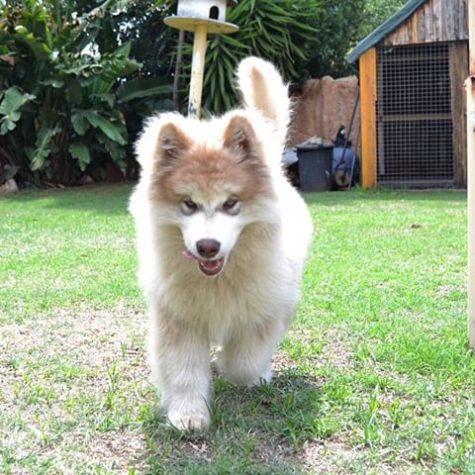 What it means:
What it means:
I want your attention. I have something to tell you, show you, and/or give you.
Verbal command – “Your Puppy’s Name”
Tone of voice – Friendly, Enthusiastic
Hand signal – none
Body Language:
Friendly and inviting.
Enforcing the command:
When conditioning your puppy to this command (the first week) be sure to always have a food reward or beloved toy when saying the name. After the conditioning has been completed, inattention can be corrected using a shake can (or other loud startling noise). A quick pop on the leash is also an effective way to get your puppy’s attention. As soon as your puppy looks at you, praise him, be happy with him, and then say, show, or give whatever it was you had in mind initially.
Do’s and Don’ts:
Keep the treats out of sight (except for the first few days). Holding the treat behind your back is a good way to keep it out of sight. Give the treat AFTER the puppy has given the desired response rather than as bait to obtain the response.
Use your puppy’s name only when something good will happen. Do not use your puppy’s name in connection with a correction, or in a demanding, angry tone of voice. If correcting is needed, you can say “Bad Puppy!” or “Shame On You” or “No!”
Praise your puppy with enthusiasm whenever he responds to his name.
What your puppy learns:
That his name is his own special word, teaches him to look to you for leadership, love, and all good things. Also helps to establish the necessary groundwork for a reliable “Come” when called.
Written by: Shirley Gibson
Note:
You are welcome to share this post but ONLY IF you give credit and a link back to Teach Your Dog To Behave or shirleytwofeathers.com.
Teaching Your Puppy to Drop It
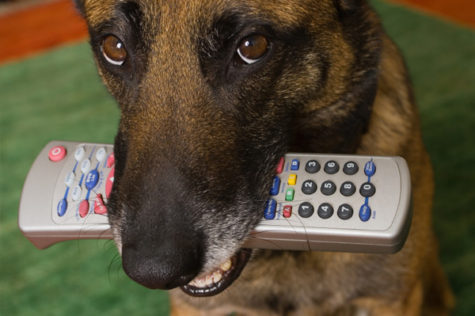 What it means:
What it means:
Spit that out of your mouth this instant, and never pick it up again.
Verbal command – “Drop It!”
Tone of voice – Sharp, firm, demanding
Hand signal – none
Body Language:
When teaching this command, have your puppy on leash. You can either sit or stand, but try to keep a low profile, you want your puppy to forget you are watching.
Enforcing the command:
As soon as the puppy picks up the item, say the command “Drop It!” in a sharp tone of voice. If your puppy does not spit the item out, or tries to run off with it, repeat the command “Drop It” in a louder, somewhat startling and more demanding tone, and at the same time give the leash a sharp jerk. If the leash correction isn’t sufficient to induce the puppy to drop the item, pull it from the puppy’s mouth, put it back on the floor, and wait to see if the puppy will pick it up again. If he does, repeat the correction, each time with a sharper tone and a stronger pop on the leash.
Do’s and Don’ts:
Do leave the item out where the puppy can see it and has access to it (under your direct supervision only). This will give you plenty of chances to reinforce this command.
Do not put the item out of reach until the puppy has decided not to pick it up again. Do not allow your puppy to run off with and keep the item.
Use this command ONLY with items you never want your puppy to have in his mouth. Do not use this command with toys or items that are sometimes OK to play with.
What your puppy learns:
Self control, and that everything in the world is NOT for the taking. This command also strongly reinforces your position of leadership in the relationship.
Written by: Shirley Gibson
Note:
You are welcome to share this post but ONLY IF you give credit and a link back to Teach Your Dog To Behave or shirleytwofeathers.com.

